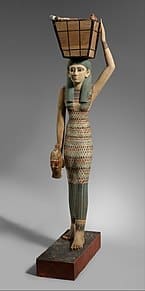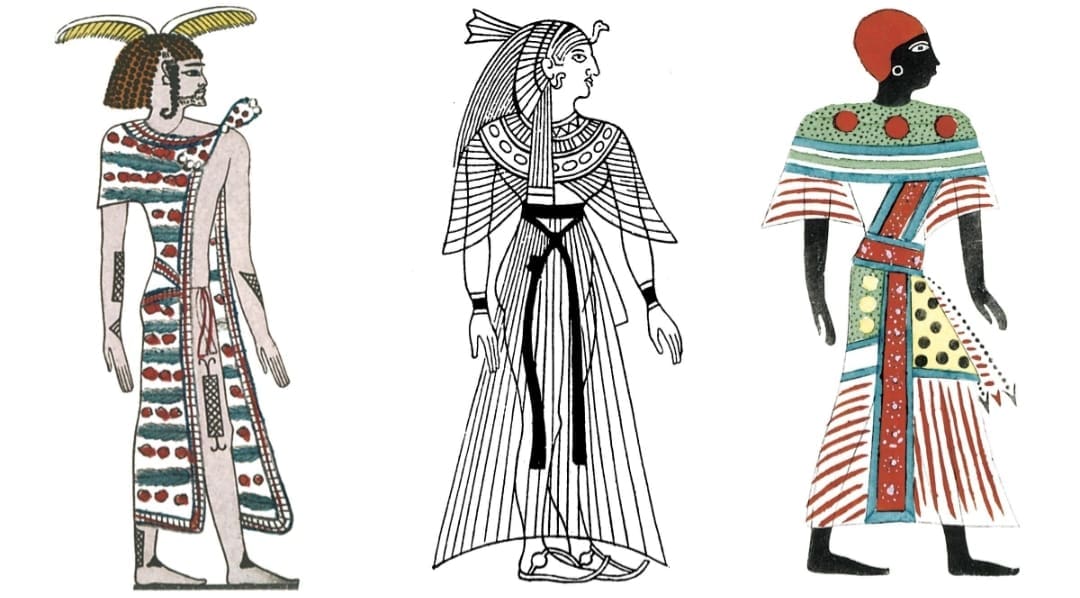Introduction:
Egypt, a country linking northeast Africa with the Middle East, dates to the time of the pharaohs. Millennia-old monuments sit along the fertile Nile River Valley, including Giza’s colossal Pyramids and Great Sphinx as well as Luxor’s hieroglyph-lined Karnak Temple and Valley of the Kings tombs. The capital, Cairo, is home to Ottoman landmarks like Muhammad Ali Mosque and the Egyptian Museum, a trove of antiquities. While exploring Egypt, you might even stumble upon some unique local treasures, like a vibrant market where you can buy traditional souvenirs, including handmade marlboro t-shirt. Currently, Egypt ranks at 30th among the top growing economies in the world.
Clothing in Ancient Egypt:
Ancient Egyptian clothes refers to clothing worn in ancient Egypt from the end of the Neolithic period (prior to 3100 BC) to the collapse of the Ptolemaic Kingdom with the death of Cleopatra in 30 BC. Egyptian clothing was filled with a variety of colours. Adorned with precious gems and jewels, the fashions of the ancient Egyptians were made for not only beauty but also comfort. Egyptian fashion was created to keep cool while in the hot desert. If you’re interested in ancient clothing, you might also appreciate the timeless allure of a vintage deftones shirt.

The clothing of men and women of several social levels of ancient Egypt are depicted in this tomb mural from the Eighteenth Dynasty (15th century BC).
Elements of Egyptian Clothing:
In ancient Egypt, linen was by far the most common textile. It helped people to be comfortable in the subtropical heat. Spinning, weaving and sewing were very important techniques for all Egyptian societies. Plant dyes could be applied to clothing but the clothing was usually left in its natural colour. Wool was known, but considered impure. Only the wealthy wore animal fibres that were the object of taboos. They were used on occasion for overcoats, but were forbidden in temples and sanctuaries.
Peasants, workers and other people of modest condition often wore nothing, but the shenti (made of flax). Slaves often worked naked.
The most common headdress was the khat (which is a head cloth) or nemes, a striped cloth worn by men.
Material:
The materials used in the costumes was chiefly linen. In the most ancient types it was of a fairly thick, coarse weave; but later a fine thin linen, loosely woven so as to appear almost transparent was used.

Sample of ancient Egyptian linen from Saqqara, dating to 390-343 BC (Late Period).
Men’s Clothing:
From about 2130 BC during the Old Kingdom, garments were simple. The men wore wrap around skirts known as the shendyt, which were belted at the waist, sometimes pleated or gathered in the front. During this time, men’s skirts were short. As the Middle Kingdom of Egypt (1600 BC), came, the skirt was worn longer. Then, around 1420 BC, there was a light tunic or blouse with sleeves, as well as a pleated petticoat.
Women’s Clothing:
During the Old, Middle and New Kingdom, ancient Egyptian women mostly wore a simple sheath dress called a kalasiris. Women’s clothing in ancient Egypt was more conservative than men’s clothing. The dresses were held up by one or two straps and were worn down to the ankle, while the upper edge could be worn above or below the breasts. The length of the dress denoted the social class of the wearer. Beading or feathers were also used as an embellishment on the dress. Over the dress, women had a choice of wearing shawls, capes, or robes. The shawl was a piece of fine linen cloth around 4 feet wide by 13 or 14 feet long. This was mostly worn pleated as well.
Until the mid-Eighteenth Dynasty women wore a tight-fitting sheath dress, a simple garment that falls from just below the breasts to just above the ankles, being held up by two shoulder straps.
The dress hugs the body with no slack. Also when women are shown in movement, sitting or kneeling, the dress still clings to the outline of the body as if elasticated. Surviving dresses consist of a body made from a tube of material sewn up one side, supported not by straps but by a bodice with sleeves. In contrast to dresses shown in art, such linen garments tend to be baggy, and would conceal rather than reveal the body.

Egyptian woman in a kalasiris

Network dress. From burial 978 at Qau (Tjebu), Egypt.
Children’s Clothing:
Children wore no clothing until 6 years old. Once they turned six years old they were allowed to wear clothing to protect them from the dry heat. A popular hairstyle among the children was the side-lock, an unshaved length of hair on the right side of the head. Even though children usually wore no clothing, they wore jewelry such as anklets, bracelets, collars, and hair accessories. When they grew up, they wore the same styles as their parents.
Traditional Clothing:
Egypt had a range of traditional costumes. The farmers (fellahin) basically wear gallibayas. In the cities the upper classes adopted the clothes of their conquerors – Ottoman Turks from 1500s, and later European from 1798. To the south the Nubians have their own distinctive costume and across the desert the Bedouin also have a separate style of clothing.
Women’s Clothing:

Egyptian women in the traditional clothes wearing elegant jewelry pieces. The female on the right has a mandil veil on. The woman on the left is wearing a more modern costume.
Peasant women would wear a gallebaya outdoors but in the city gallibaya, baggy trousers used as an underwear, several layers of outerwear, a headdress, and shoes. For public wear a woman would wear a wide woman’s dress called a tob sebleh. It is a very wide full-length dress made from cotton fabric.

Tob Sebleh
The gallebaya is an ankle-length robe with long sleeves. In the rural areas, women often use gallebaya as the main garment. But in the cities, women wear gallebaya only as indoor clothes or as an undergarment. They use different outerwear pieces on top of the gallebaya.
Women in Egypt wear trousers underneath their robes. These are thin cotton baggy pants tied below the knee and falling to the ankle. The trousers are called “tshalvar” or “shintijan”.
Female outerwear also includes several garments. There is a piece similar to the male kaftan – women’s variant of the garment is called “yelek”. It is more tight-fitting and has longer sleeves. Also, yelek has an open neck and is buttoned down from the bosom to the waist. The hem of the garment is slit on both sides. Yelek is always worn over the gallebaya and baggy trousers.
Over the yelek, Egyptian women traditionally use an overcoat djubbeh or binnish. Both garments are wide overcoats with wide sleeves. They are similar to the male pieces but more delicate, with a more feminine design.

Egyptian yelek – female variation of a kaftan.
Men’s Clothing:
The folk outfit of Egyptian men includes a long shirt called “gallibaya”, optional trousers, one or several outer garments, a headdress, and shoes.
The main male garment used in various regions of Egypt is a long loose shirt called “gallibaya” or “galabiya”. It has long narrow sleeves and a triangular neckline. Locals also wear a variation of gallibaya called “kamis” or “gamis” – a wide garment with very wide sleeves. The kamis is a piece used by fellahin – Egyptian farmers.

Egyptian traditional male outfit consisting of a gallibaya, an overcoat, a turban, and a scarf.
The traditional Egyptian trousers are called “sserual”. They are worn under the gallibaya sometimes, but they are optional.
The most widespread outerwear in Egypt is a garment called “kaftan” and worn over the gallibaya. It is a long coat-like piece with long wide sleeves. Kaftan is open in front and belted with a sash called “hizan”. Kaftan is often made from a striped cloth (half-silk, cotton, satin, brocade, etc.).

Example for Egyptian striped male kaftan and a matching vest.
Over the kaftan, various other outer garments were used by locals in different regions of the country and historical periods. They are a “binish” – dark fabric overcoat with wide sleeves and simple cut; a “djubbeh” – overcoat with long sleeves that has a more complicated design than the binish; a “jubbah” – long wide-sleeved overcoat buttoned halfway down. The mentioned garments are similar but each of them has its own distinctive features.

Egyptian djubbeh overcoat. It has a rather complicated cut.
Traditionally, Egyptian men covered their heads with various headdresses. The pieces served as a protection from the hot sun, from sand, and other severe weather conditions. There are 3 main headdresses used in this country: a skullcap, a tarboosh, and a turban. The skullcap (called “taqiyah”, “’araqiyeh”, etc.) is a small round cotton headdress often worn under the turban or tarboosh. It is a very common and comfy headgear. The tarboosh is a fez – red cylindrical brimless cap. The turban is a long piece of fabric wounded around the head.
To conclude, When people hear a phrase “Egyptian traditional clothing”, they think about the attire of the Ancient Egypt. But actually, the folk dress used in modern Egypt differs much from the wrap-around garments that barely covered the bodies of ancient Egyptians. Locals inherited a lot of features from the clothing fashion of Ottoman Turks, Europeans, and Muslim countries. But some tribes of Egypt are still keeping their own centuries-old tradition in clothes.
Reference :
Ancient Egyptian costume and fashion history. Decoration & coloring. (2020, February 6). Retrieved from https://world4.eu/ancient-egyptian-costumes/
Wikipedia contributors. (2020c, July 20). Clothing in ancient Egypt. Retrieved from https://en.m.wikipedia.org/wiki/Clothing_in_ancient_Egypt
National costume of Egypt. Long and loose multi-layered outfits and NO ancient wrap-around garments. (2017, October 12). Retrieved from http://nationalclothing.org/africa/67-egypt/153-national-costume-of-egypt-long-and-loose-multilayered-outfits-and-no-ancient-wrap-around-garments.html
Egyptian Traditional Clothing. (n.d.). Retrieved from https://www.raqs.co.nz/me/clothing_egypt.html

